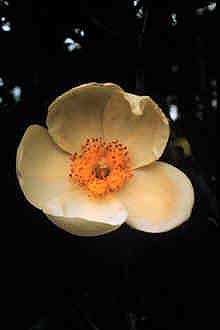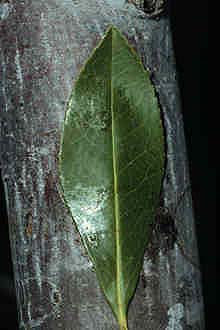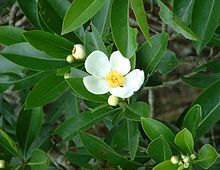| Gordonia | |
|---|---|
 | |
| Gordonia lasianthus flower | |
| Scientific classification | |
| Kingdom: | Plantae |
| Clade: | Tracheophytes |
| Clade: | Angiosperms |
| Clade: | Eudicots |
| Clade: | Asterids |
| Order: | Ericales |
| Family: | Theaceae |
| Genus: | Gordonia Ellis |
| Species | |
See text | |
| Synonyms [1] | |
| |



Gordonia is a genus of flowering plants in the family Theaceae, related to Franklinia , Camellia and Stewartia . It includes 22 species native to the tropical and subtropical Americas, ranging from the southeastern United States and southern Mexico to Bolivia and southern Brazil. [1]
Contents
They are evergreen trees, growing to 10–20 m tall. The bark is thick and deeply fissured. The leaves are alternately arranged, simple, serrated, thick, leathery, glossy, and 6–18 cm long. The flowers are large and conspicuous, 4–15 cm diameter, with 5 (occasionally 6-8) white petals; flowering is in late winter or early spring. The fruit is a dry five-valved capsule, with 1-4 seeds in each section.
The species are adapted to acidic soils, and do not grow well on chalk or other calcium-rich soils. They also have a high rainfall requirement and will not tolerate drought.
Some botanists include Franklinia within Gordonia, even though recent phylogenetic studies show that Franklinia's closest living relationship is with the Asian genera Schima and not Gordonia; [2] it differs in being deciduous and flowering in late summer, not late winter. The draft Flora of China account of Theaceae in China split Gordonia into two genera, with G. lasianthus retained in Gordonia, and the Asian species transferred to Polyspora.